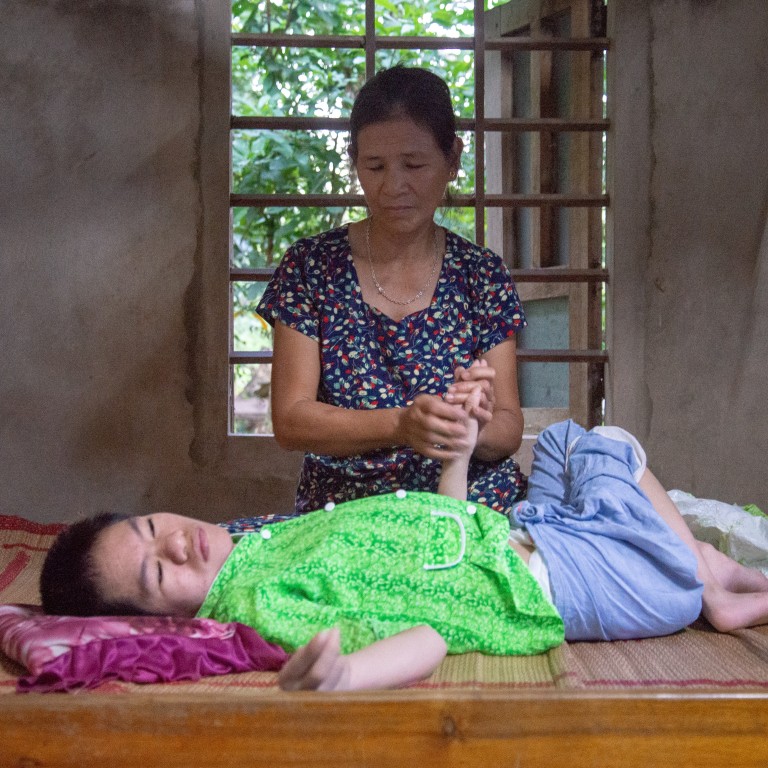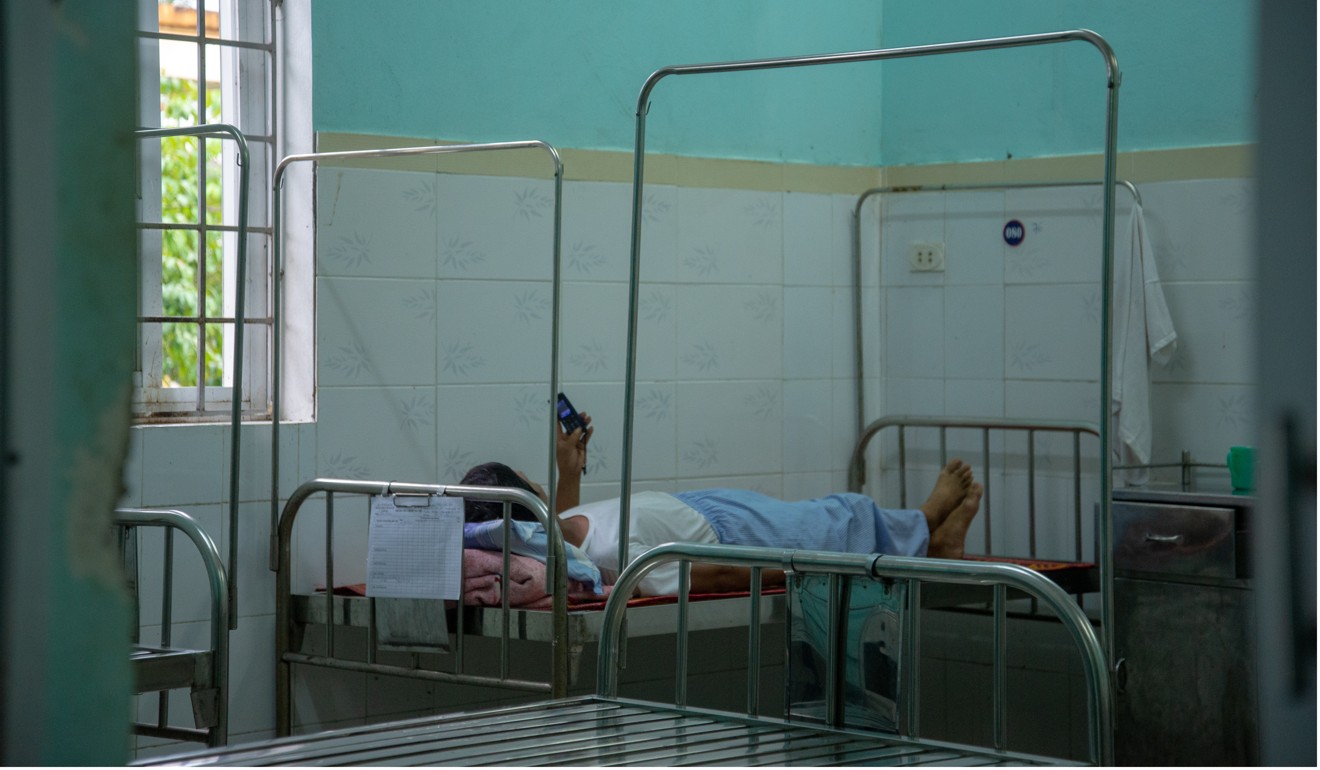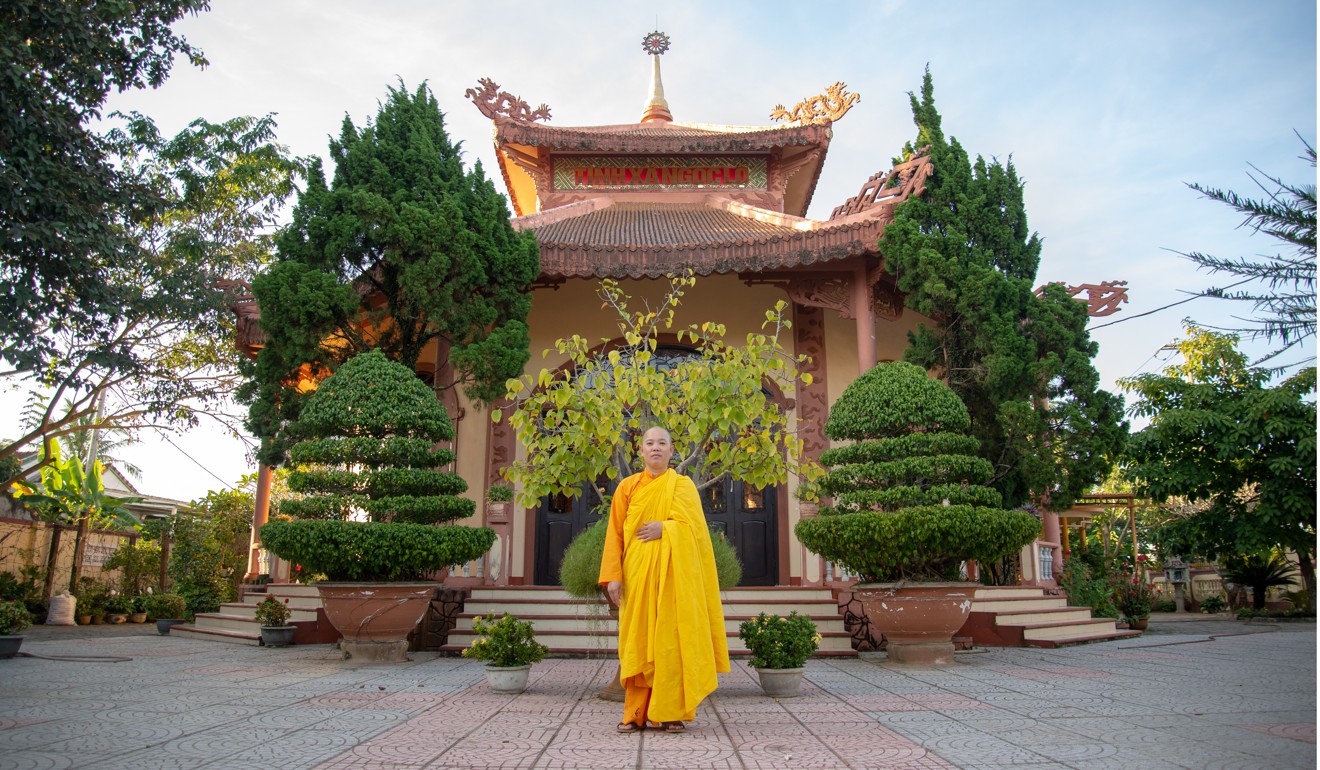
‘I hope my son dies before me’: 44 years after US-Vietnam war, Agent Orange victims are treating brain damage with painkillers
- The market for low-cost painkillers is ballooning as poverty-stricken victims of the US military’s toxic herbicide search for relief
- But many living in rural areas without proper care cannot be weaned off their medication, which doctors say is worrying because of long-term health risks
Every night for the past 20 years, Nguyen Thi Tai takes four white tablets before bed so she can sleep without pain.
Four of Gai’s eight children have medical conditions linked with Agent Orange. The family lives on less than US$30 a month, crammed in a tattered house in rural Cam Tuyen village.

Vietnam has become one of the fastest-growing markets for painkillers, according to market research firm Euromonitor International, with sales figures jumping nearly 80 per cent from US$76.1 million to US$135.4 million between 2014 and 2018.
America’s Agent Orange comes back to haunt Vietnam, 44 years on
Many of those with Agent Orange-related conditions and living in rural areas cannot be weaned off cheap painkillers, which doctors say is worrying because of long-term health risks.
Quang Tri has one of the highest concentrations of Agent Orange victims in Vietnam with 15,000 of its 650,000 population affected, according to local government body the People’s Committee.

Officially, the province is served by 156 “health care facilities”. In reality, however, that means 12 provincial hospitals, one polyclinic and five rehabilitation hospitals for chronic illnesses. Mostly, people go to basic, ill-equipped “commune health stations” for primary health care.
This is a world apart from the situation in better served cities. The Tu Du Hospital in Ho Chi Minh City, for example, has a ward providing round-the-clock care for children born with deformities caused by Agent Orange.
The all-women team searching for Vietnam war bombs
Most villagers are exempted from paying for medical consultations and medicines, but patients must be present to claim their benefits, and parents find it too difficult to take their disabled children to seek treatment.

Dr Doan Thanh Nhan of the Hue University Hospital says victims of Agent Orange need to start therapy early. “There is no one universal treatment for these patients and we need to intervene individually,” he says.
Vietnam war bombs: for scrap metal collectors, a life and death matter
Nhan says more community-based rehabilitation programmes, such as house calls, are being explored and hopefully will help the people in Quang Tri.
For many villagers, however, getting to a hospital is too much of a challenge.
Tran Thi Ngiem, 56, does not take her son, Tran Van Hung, 18, to the nearest district hospital 10km from their home in Bang Son village because it is too far to travel. The bedridden youth has severe brain damage, and is unable to speak or chew.
Ngiem says: “I am getting old and he is getting heavier by the day. It’s hard for me to even take him to the toilet to bathe him, let alone go to the hospital.”

In nearby Phuong An village, 70-year-old Le Thi Bich and her 75-year-old husband, Nguyen Van Loc, survive on US$21.50 a month from the government. They earn a little more by selling chickens that they raise, and tea leaves from their garden.
Two of their three children have died, leaving the couple to care for their 32-year-old son, Nguyen Van Theong, who is severely brain damaged.
They cannot afford to pay to get him to the nearest hospital, 20km away.
They buy over-the-counter drugs for their son, who takes three mental stabilisers and four painkillers a day to soothe his hysteria and muscle spasms.
Why US soldiers were on front lines of anti-Vietnam-war movement
“It is a struggle,” Bich says. “I hope my son dies before me, so I won’t have to worry about what will happen to him when I’m gone.”
To ease the burden of parents like her, Buddhist nun Thich Nu Lien Thien began providing free physiotherapy at her temple in Cam Lo district to children with physical disabilities.
A certified physiotherapist, she sees about 10 to 15 children daily. Since 2010, she has helped more than 100 children, some as young as eight months old.
“It’s sad to see young children suffer. If I can help them when they are still young, they might have a higher chance of some improvement,” Thien says.
She has noticed a rise in the number of children being brought to her for help. Last year, there were “a few dozen more parents” with disabled newborns than in 2017.
“There have been a lot more affected babies and it is alarming,” she says. “It is worrying that most of the new cases are children born to parents with no history of Agent Orange.” ■


